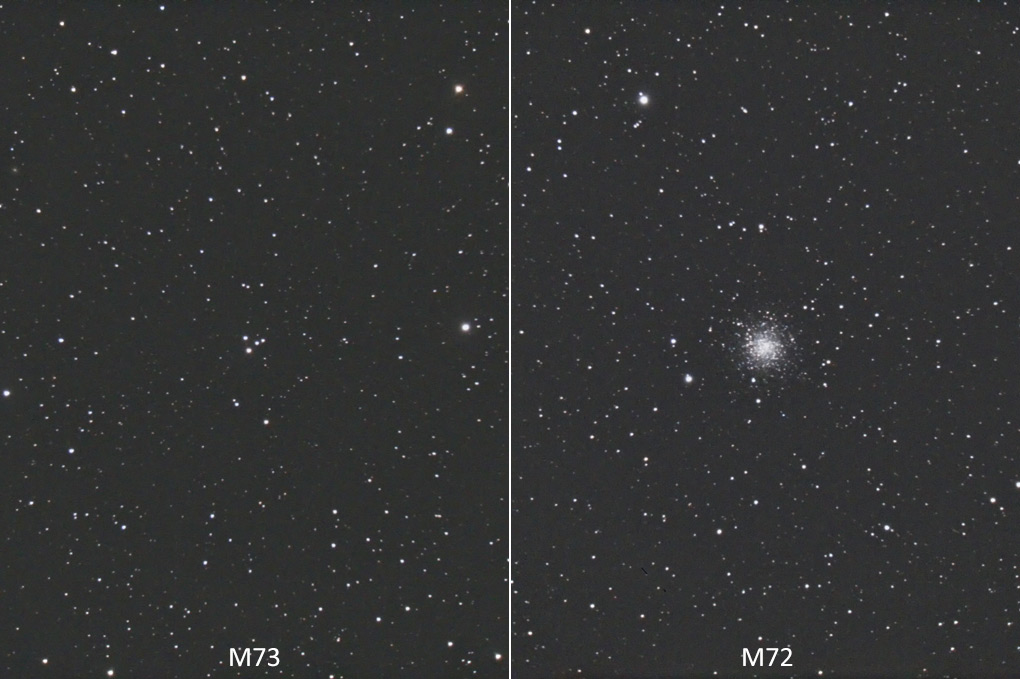
 |
| Date & Time: | M72: Nov 7 2021, from 19:35 to 20:03 JST(+0900), 4min.×8shots |
| M73: Nov 7 2021, from 20:09 to 20:29 JST(+0900), 4min.×6shots | |
| Optical: | Meade 25cm(10") Schmidt-Cassegrain with conversion lens (f=1600mm, F6.3) |
| with BaaderPlanetarium Moon&Skyglow filter | |
| Auto-guided with Meade LX200 Equatorial & Lacerta M-GEN | |
| Digital Camera: | Nikon D810A |
| Location: | Ooizumi, Hokuto city, Yamanashi pref. |
| Camera Settings: | Recording Format...14bit CCD-RAW, converted to 16bit TIFF(3060×4080) |
| Device Size...15×20mm | |
| Sensitivity...ISO4000, White Balance...Daylight |
M72 is a globular cluster with an apparent diameter of 6 arc minutes and about 9th magnitude. It hardly can be distinguished with normal stars through finder scopes so you may miss it without very cared searching. The cluster is positioned at 3.5 degrees SSE of epsilon Aqr. And M73 is lying at 1.3 degrees east of M72. This Messier's object is registered as an open cluster, but the cluster has only four 11th magnitude fine stars. It's very delicate whether M73 can be regarded as an astronomical open cluster. You can appreciate the asterism like a very compact cluster through telescopes with a low magnifying power. It may be no wonder that Messier recognized the cluster as an open cluster. | |
M30 |
NGC288 |
| Copyright(c) 2021 by Naoyuki Kurita, All rights reserved. | |||
| To top page | To Deepsky in Autumn index | Aquarius |